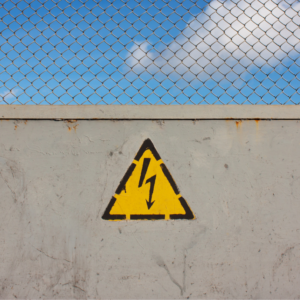
Smoke, fire, and flames claim numerous lives in South Africa, ranking among the top causes of death. In addition, the Fire Protection Association of Southern Africa has reported that almost one-tenth of all fires stem from electrical sources. “However, many South Africans are unaware that counterfeit electrical products play a major role in fuelling these incidents. To safeguard local households, it is crucial to raise awareness and illuminate the extent of this problem,” says Dr Andrew Dickson, Engineering Executive at CBI-electric: low voltage.
Speaking in light of World Anti-Counterfeiting Day, he points out that commonly counterfeited items include terminal connector blocks, timing switches, circuit breakers and earth leakage devices, as well as multi-plugs and adapters. “These products can cause burns, electrical shocks and even fires.”
Dr Dickson explains that the use of substandard materials to make counterfeit products cheaper is largely to blame and unfortunately, with the current economic climate, the counterfeit market is rife. “For example, instead of using plastic materials that are non-flammable or self-extinguishing to produce electrical products and components, counterfeiters use cheap alternatives that burn more easily and can produce toxic smoke which makes the electrical installation unsafe and ultimately puts the consumer at risk of injury or death.”
“Not only are these criminals putting people’s lives at risk, but they are also taking away economic activity from legitimate businesses,” he notes. “In fact, a report published by the Transnational Alliance to Combat Illicit Trade has shown that illicit trade is one of the biggest threats to stability and economic growth in South Africa, with the country losing R250 million a day.”
To help raise awareness among consumers, Dr Dickson shares his top tips for ensuring the authenticity of the products they purchase:
- Manufacturers and importers must have a Letter of Authority (LOA): No electrical goods can be sold legally in South Africa without a LOA from the National Regulator for Compulsory Specifications (NRCS). This ensures that they comply with internationally accepted standards for public health and safety as well as environmental protection. Regulated products must be approved before they enter the South African market and are subject to post-market inspections at manufacturers’ premises, the country’s ports of entry, and retailers. Any non-compliant products found could potentially be recalled, confiscated or destroyed.
- Buy recognised brands from recognised establishments: According to the latest Survey on Electrical Counterfeiting in Africa, the majority of the continent’s consumers purchase these products from street vendors. While this may be a more affordable avenue, it gives them little recourse should the product be faulty. Rather shop for products from well-known brands and from reputable wholesalers and retailers.
- Use compliant and trustworthy contractors: Unscrupulous electricians are another common source of counterfeit electrical goods. However, in South Africa all low voltage electrical installations (which include circuit breakers, cables and earth leakage devices, amongst others) must – by law – comply with the requirements of SANS 10142 which is the standard for the wiring of premises. A Certificate of Compliance (COC) verifies that an electrical installation is compliant, but if it is discovered that this was issued fraudulently, it may invalidate the consumer’s insurance cover. So, for example, in the event of an electrical fire, the insurer can refuse to pay any claims.
- If the price is too good to be true, it probably is: As the old adage goes, you get what you pay for. The problem with counterfeit goods is that shortcuts are taken so their quality is compromised. With electrical items like circuit breakers, for instance, most people don’t understand the value and the protection these provide until they are in a situation where they need the products to operate. If a circuit breaker fails to operate, it places the electrical installation, and potentially appliances, at risk for damage, and in severe cases may result in a fire.

